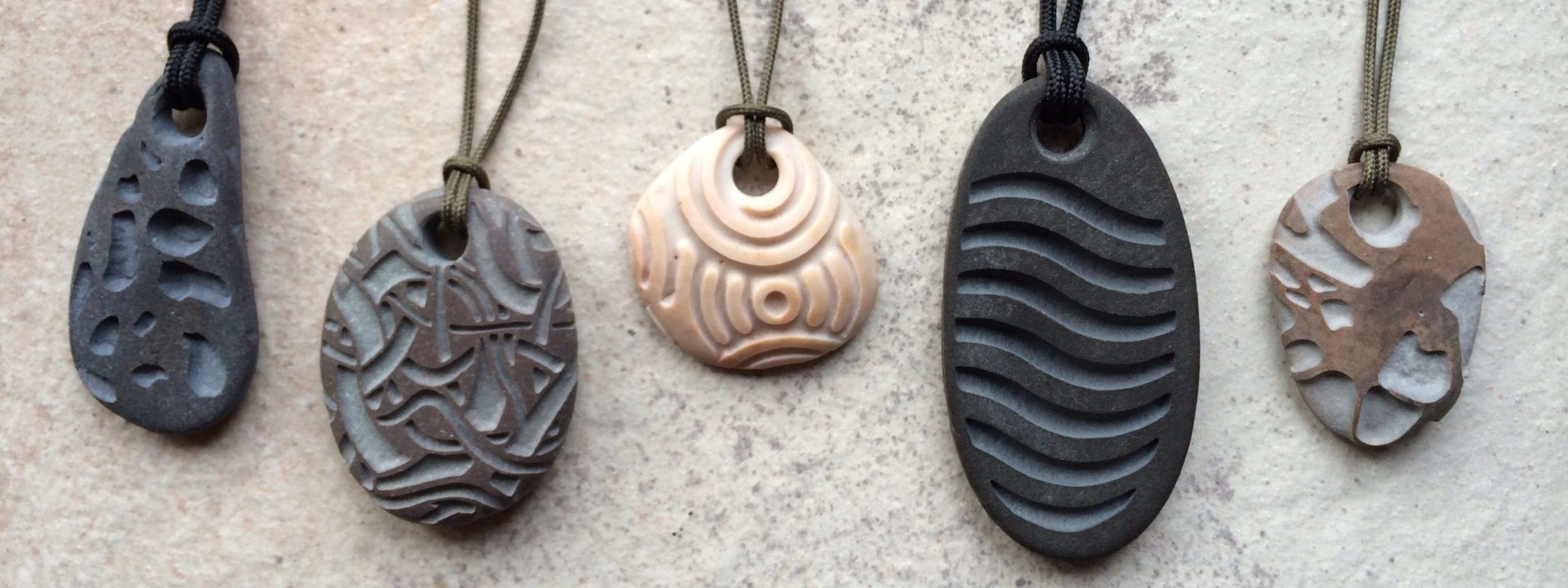

My journey to being a sculptor has been late in coming, and a complete surprise to me. I had a hostile relationship with art in grade school and high school, as I was convinced that I had no ability or creativity, and my teachers were asking me to express ideas I didn’t have with skills I couldn’t master. I went on to study geology, and had a long career with the Oregon geologic survey, much of that time in the field.

During this time, I looked at rocks. A lot of rocks. In cliffs and canyons, roadcuts and riverbeds, coastlines and quarries. The first thing a geologist does on encountering a new rock is to whack it with a hammer to see what it looks like inside, because rocks in the wild almost always look different on the outside than on the inside, as weathering and erosion have shaped and altered their surfaces. With this experience behind me, I was fortunate in the last few years of my career to be sent to work in the eastern Columbia River Gorge. There I began to collect pieces of Columbia River basalt that had appealing shapes and had developed beautiful patinas. All basalt develops joints as it shrinks during cooling, and we are all familiar with the hexagonal columnar joints. But other joint geometries also occur, and I was finding pieces that were shaped as spikes and fins mixing flat planes and elegant curves with sharp edges, all painted yellow-brown and gold with iron oxide and clay deposited by thousands of years of groundwater slowly seeping through the joints. I also knew that beneath that weathered exterior was dense black rock, so I ordered a cheap countertop polisher and tried polishing one face of a favorite piece. I had no idea what I was doing, but fortunately that first piece turned out well, and it has been full speed since then. I have also branched out from basalt, working with many other types of found stone, including rhyolite, welded tuff, blueschist, siltstone and serpentine. Half my work is done when I find a piece, and I try to honor its long journey by preserving much of its shape and natural surface.



I retired from geology in 2021, and was finally able to devote significant time to carving, and quickly realized that my aspirations way outstripped my tools and knowledge. Dave Haslett, a longtime NWSSA member, had recently installed a large public piece in my hometown, so I contacted him and he graciously invited me to come visit his studio. It was a fantastic experience, seeing his tools and stones and talking with him about his work. I came away with several great tips, the best of which was to join the NWSSA and to attend one of the carving symposia.

The 2022 Suttle Lake symposium was fantastic, so many stones, so many ideas, such a great group of people. They made me feel like I belonged and were so patient with me as I tried to absorb all the new tools and techniques. When I took a break from carving, I often sat with my eyes closed just to listen to the cacophony of grinders and hammers that were expressing all that creative energy. NWSSA has been a tremendous resource for me as I try to learn this craft from scratch, and I have benefitted from studio visits with Jeremy Kester and Tom Small, and generous email advice from the likes of George Pratt, Lee Gass and Deborah Wilson. I look forward to learning more from NWSSA and its members as I try to master stone carving.











We need some kind of descriptive text here.